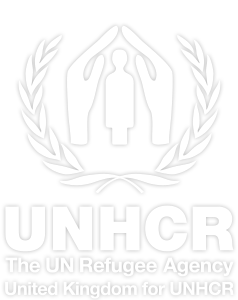Conflict in Sudan
Since war broke out in April 2023, more than 11.3 million people have been forcibly displaced.
For more than a year, the Sudanese people have endured horrific violence as the conflict rages on without resolution. Sudan was host to one of the largest refugee populations in Africa before the conflict began. People desperately need help.

Shelter
to protect families who have been forced to flee their homes.
Water
for people on the move amid blistering temperatures.
Basic essentials
for families who have left everything behind.
What is the situation in Sudan?
Since the outbreak of conflict in April 2023, the humanitarian situation in Sudan has worsened and has since showed no sign of improvement. The ongoing violence is leading to unprecedented displacement and exacerbating an already challenging situation. The country has faced severe flooding and conflict in recent times, resulting in more than 11.3 million people being displaced, – with over 2 million of them being forced to flee Sudan.
The ongoing violence has made aid operations extremely difficult and dangerous, and is affecting the protection of families in conflict-affected communities – mainly in Darfur, Kordofan and Khartoum.
People have fled to seek shelter in the neighbouring countries of Chad, Egypt, South Sudan, Ethiopia and the Central African Republic. These countries have also been devastated by conflict, climate disasters and instability in recent times.
Can you tell us more about the famine?
Famine has hit the most vulnerable in Zamzam camp, North Darfur and millions more are at risk of facing famine in the country.
Mamadou Dian Balde, Regional Refugee Coordinator for the Sudan Situation and Director of the East and Horn of Africa and Great Lakes Region, UNHCR stated:
“The warning signs were there for months, now we face the grim reality of famine in Sudan. Such a tragedy for civilians caught in the conflict – many of whom have been displaced multiple times. The brutal war must end, and humanitarians need access to deliver urgently needed aid.”
UNHCR along with the international community is urging an end to the conflict and immediate humanitarian access to the most affected by this conflict. We are delivering lifesaving aid across Sudan and neighbouring countries and providing protection and psychosocial support to people forced to flee.
Is UNHCR still operating in Sudan?
UNHCR and its partners are responding to the challenges, but regularly encounter obstacles such as access constraints, security risks and logistical issues, especially in areas most affected by the conflict.
UNHCR has been supporting displaced people in Sudan for many years and relief operations are continuing with precautions wherever the situation allows. Staff are monitoring the situation daily. But whilst the conflict continues, aid delivery and protection in some of the conflict-affected communities in Sudan remains challenging.
How is UNHCR responding to this latest crisis?
Despite the security situation, UNHCR is providing protection services and critical lifesaving assistance to the most vulnerable forcibly displaced people and host communities across the country.
UNHCR has well-established operations across Sudan, as well as in neighbouring countries. It is calling on all parties to stop the conflict and ensure people are protected, so that humanitarian operations can continue.
UNHCR is also urging neighbouring countries to keep their borders open to fleeing civilians.
Following the outbreak of conflict, UNHCR scaled up operations rapidly to support those fleeing. The most pressing needs continue to be water, food, shelter, healthcare, child protection and prevention of gender-based violence. Due to the violence experienced by those crossing the border, psychosocial support is also among UNHCR’s top priorities.
What is Sudan’s role as a refugee hosting country?
Before the conflict broke out, Sudan generously hosted one of the largest refugee populations in Africa, providing refuge to just over one million people who had fled conflict in countries such as South Sudan, Eritrea, Ethiopia and Syria.
Due to the ongoing conflict, hundreds of thousands of refugees currently living in Sudan have returned to their home countries, such as South Sudan, the Central African Republic and Ethiopia.
How is UNHCR supporting South Sudanese refugees returning to South Sudan?
Sudan previously hosted over 800,000 South Sudanese refugees, a quarter of whom were in the capital, Khartoum and were affected by the conflict. As a result of the fighting, 799,000 people have now crossed into South Sudan – the majority of whom are South Sudanese returnees. UNHCR teams and partners are at border crossing points to monitor new arrivals and provide assistance, including essential protection services and emergency relief items.
Many South Sudanese refugees face returning to areas that remain fragile as a result of conflict, climate change or food insecurity – or a combination of all three.
To read more about UNHCR’s work in South Sudan, please visit our website here.
Are civilians being displaced by this latest violence?
Over 11.3 million Sudanese people are currently displaced, whilst many others have fled the country and have sought safety in the neighbouring countries of Chad, Egypt, Uganda, and South Sudan, among others. UNHCR teams and partners are on the border to support people as they cross.
Prior to the escalation in violence in April 2023, conflict in the country had already displaced 3.7 million Sudanese within Sudan, while more than 840,000 had fled the country and become refugees in countries such as Chad, South Sudan, Egypt and Ethiopia.
How can I support relief efforts for people affected by this conflict?
You can make a donation here to support UNHCR’s emergency response to the Sudan emergency and neighbouring countries.
Fundraising is another great way to help and there are lots of ways to get involved – from taking on a sporting challenge to organising an event at work, home or school. For more information, please visit our fundraising page.
For other ways to help, visit our website here.
Where can I find out more about UNHCR’s work in Sudan?
For latest updates on this and other crises that UK for UNHCR supports, follow our social media channels and sign up to our email updates.
For the latest UNHCR data relating to the Sudan emergency, please visit the UNHCR Operational Data site here.

